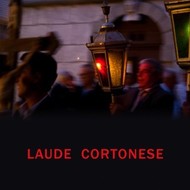Gavin Bryars: Laude Cortonese
CD / 2017
Performing
Performed by: ensemble ¡Kebataola!
Performers: Urška Breznik, Nina Dominko, Mojca Potrč
Artistic director: Karmina Šilec
Music preview
From the Press
…It would be quite a surprise if Kebataola,… under the artistic director Karmina Šilec, would prepare anything conventional.
…cultivated and mutually well-tuned vocals additionally emphasize the solemn rapture that is usually characteristic of religious ceremony…Večer
Program
Lauda 1: Venite a laudare
Lauda 2: Laude novella
Lauda 3: Ave donna santissima
Lauda 5: Altissima luce
Lauda 7: Ave, regina gloriosa
Lauda 8: Regina sovrana
Lauda 10: O Maria, d’omelia
Lauda 15: O Maria, Dei cella
Lauda 17: Ave, vergene gaudente
Lauda 18: Cristo é nato et humanato
Lauda 21: O divina virgo, flore
Lauda 25: Dami conforto, Dio

